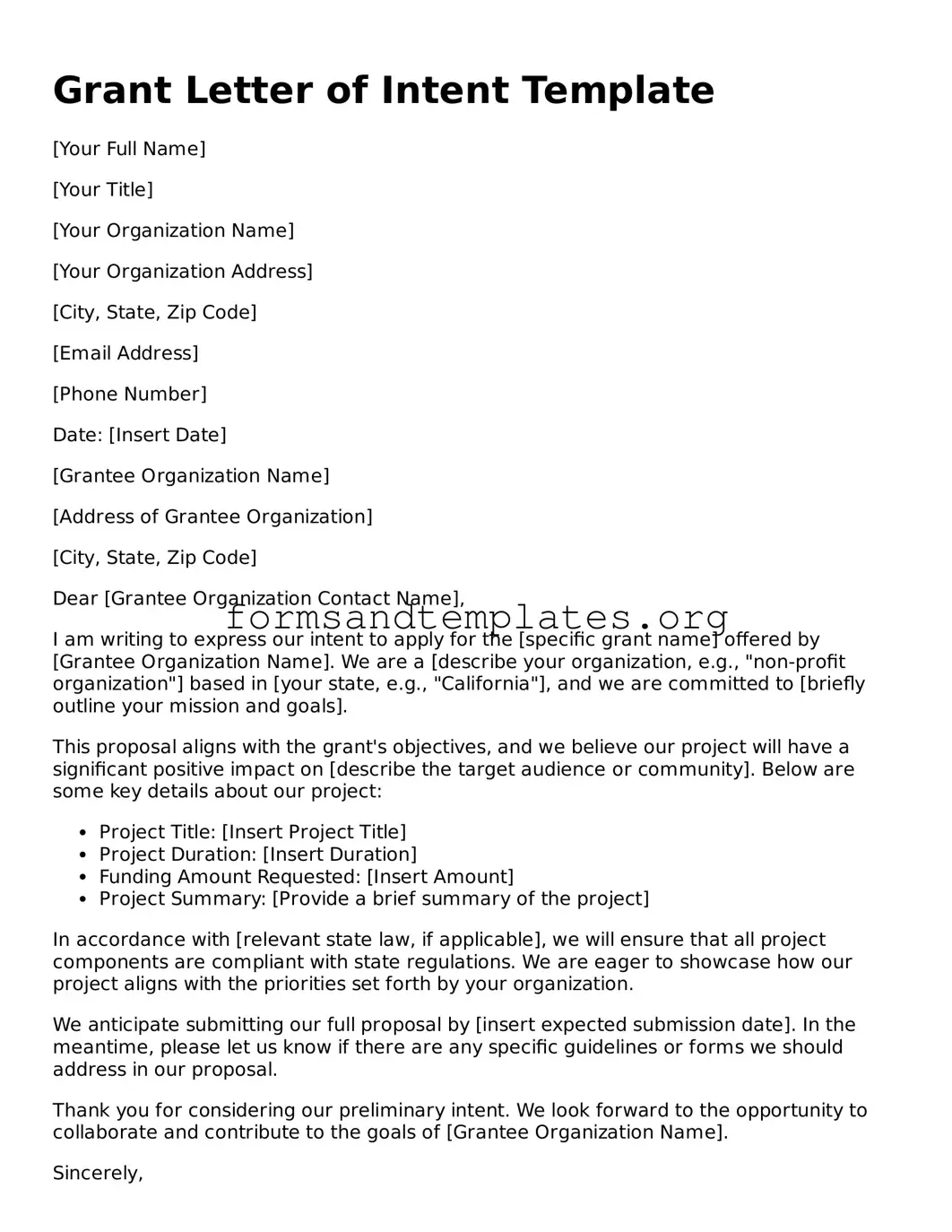Grant Letter of Intent Template
[Your Full Name]
[Your Title]
[Your Organization Name]
[Your Organization Address]
[City, State, Zip Code]
[Email Address]
[Phone Number]
Date: [Insert Date]
[Grantee Organization Name]
[Address of Grantee Organization]
[City, State, Zip Code]
Dear [Grantee Organization Contact Name],
I am writing to express our intent to apply for the [specific grant name] offered by [Grantee Organization Name]. We are a [describe your organization, e.g., "non-profit organization"] based in [your state, e.g., "California"], and we are committed to [briefly outline your mission and goals].
This proposal aligns with the grant's objectives, and we believe our project will have a significant positive impact on [describe the target audience or community]. Below are some key details about our project:
- Project Title: [Insert Project Title]
- Project Duration: [Insert Duration]
- Funding Amount Requested: [Insert Amount]
- Project Summary: [Provide a brief summary of the project]
In accordance with [relevant state law, if applicable], we will ensure that all project components are compliant with state regulations. We are eager to showcase how our project aligns with the priorities set forth by your organization.
We anticipate submitting our full proposal by [insert expected submission date]. In the meantime, please let us know if there are any specific guidelines or forms we should address in our proposal.
Thank you for considering our preliminary intent. We look forward to the opportunity to collaborate and contribute to the goals of [Grantee Organization Name].
Sincerely,
[Your Full Name]
[Your Title]
[Your Organization Name]
